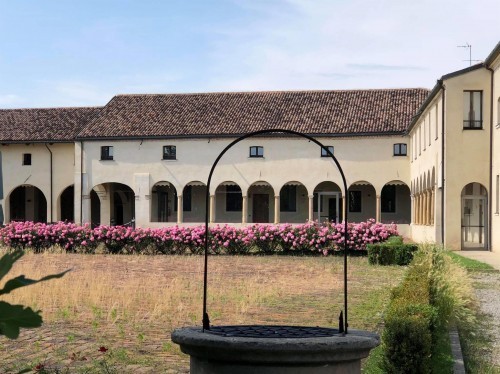La Corte Benedettina rappresenta il monumento più prezioso e significativo della comunità di Legnaro.
Centro economico, sociale e culturale del paese, sorta nel 400 per iniziativa dei Monaci di santa Giustina di Padova e cresciuta nei secoli con l’aggregazione di edifici successivi. Fu per secoli il fulcro da cui si irradiavano tutti gli interventi sul territorio riguardanti il lavoro e la salvaguardia del suolo; qui si raccoglievano decime, quartesi, onoranze, affitti, qui si ricorreva per la giustizia e la pietà. Intorno all’ampio spazio centrale con la pesa e l’aia di cotto si aprivano un tempo stalle, granai, cantine, fienili, rimesse, magazzini, locali per cedraia, legnaia, allevamento dei bachi da seta e lavori artigianali.
Alla fine del 1997 ebbe inizio, a cura della Regione Veneto, una completa ristrutturazione statica e architettonica del complesso che si concluse nella 1999.
Il comune di Legnaro ha in uso una parte del lato est con l’ampio salone per la biblioteca e due vani per le attività culturali.
---
The Benedictine Court represents the most valuable and significant monument of the community of Legnaro.
Economic, social and cultural center of the town, it arose in the 400s on the initiative of the Monks of St. Justine of Padua and grew over the centuries with the aggregation of successive buildings. It was for centuries the fulcrum from which radiated all interventions in the territory concerning labor and land preservation: tithes, quarters, honors, rents were collected here. Around the large central space with the weighing house and the terracotta threshing floor once opened stables, granaries, cellars, barns, sheds, storerooms, rooms for cedar, woodlot, silkworm breeding, and craft work.
At the end of 1997, a complete static and architectural renovation of the complex began by the Veneto Region and was completed in 1999.
The municipality of Legnaro has in use a part of the east side with the large hall for the library and two rooms for cultural activities.




